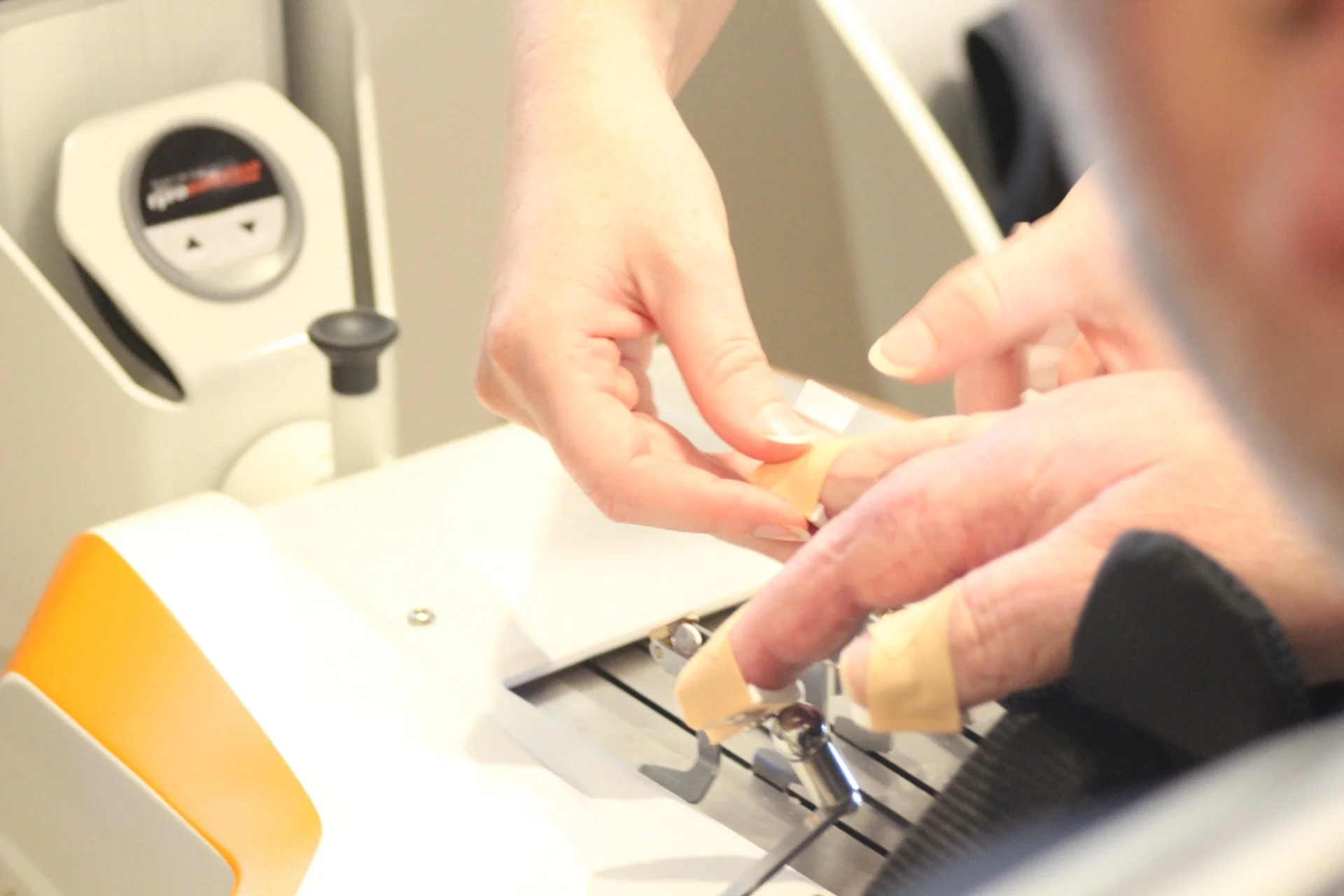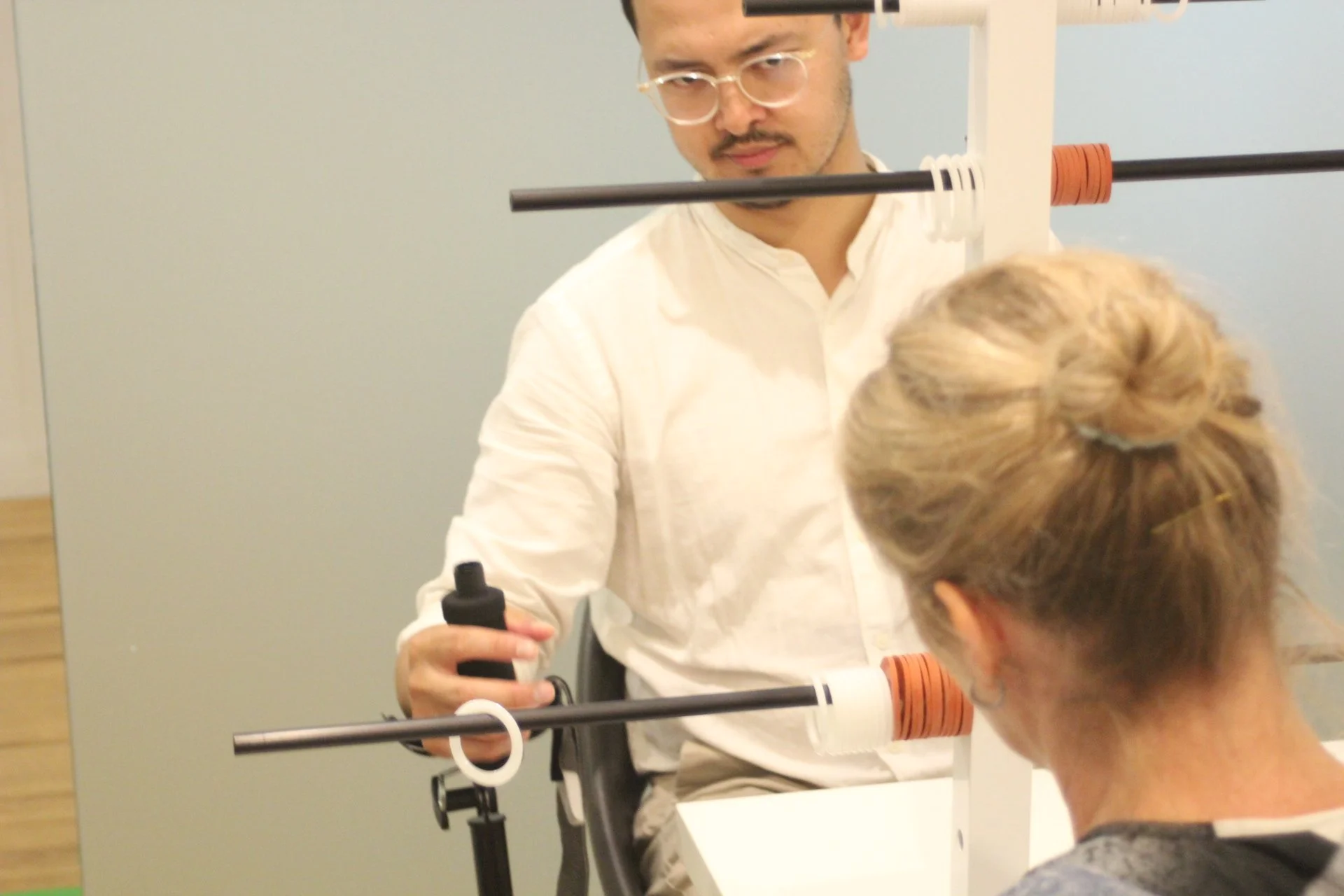Why Should I See an Occupational Therapist for Upper Limb Therapy After Stroke?
A patient being setup on the Tyromotion Amadeo upper limb robotic therapy equipment
A stroke can be a life-altering event that affects not only the person who has suffered the stroke but also their loved ones. One of the most common consequences of a stroke is the loss of mobility and function in the upper limbs. This can make it challenging to perform everyday tasks, such as eating, dressing, and personal grooming. The good news is that an occupational therapist can help you regain strength and mobility in your upper limbs, significantly improving your quality of life. This article will explore why you should see an occupational therapist for upper limb therapy after a stroke.
What is an Occupational Therapist and What Do They Do?
An occupational therapist helps people with physical, mental, or developmental disabilities regain their independence and ability to perform everyday tasks. Occupational therapists work with patients to develop and improve their fine motor skills, hand-eye coordination, and overall upper limb function. They use various techniques and tools to achieve this, including exercises, stretches, and assistive devices. An occupational therapist not only focuses on improving patients' physical capabilities, but also addresses cognitive, emotional, and environmental factors that affect an individual's functioning. They conduct thorough assessments to understand patients' needs and customise interventions accordingly.
These interventions may involve adapting to the environment, modifying tasks, teaching new skills, and leveraging technology to enhance independence and participation in daily activities. Additionally, occupational therapists play a crucial role in educating patients and their families about coping strategies and ways to maintain improvements long-term. Their holistic approach ensures individuals can lead more fulfilling and independent lives despite challenges.
One of our therapists working with a patient to restore hand function.
What is Upper Limb Therapy and How Can it Help After a Stroke?
Upper limb therapy is a specific type of therapy that focuses on improving the function and mobility of the arms, hands, and fingers. This type of therapy is essential for people who have suffered a stroke, as it can help them regain the strength and dexterity they need to perform everyday tasks. Occupational therapists use a combination of exercises and techniques to target specific areas of the upper limb and improve their function. This can include range-of-motion exercises, strength training, and assistive devices. Upper limb therapy is critical in restoring stroke survivors' sense of autonomy and confidence. By focusing on the affected upper limb, occupational therapists help individuals relearn how to perform tasks that were once second nature, such as eating, dressing, and writing. This therapy often incorporates adaptive techniques and equipment to assist in daily activities while employing therapeutic exercises to reduce muscle stiffness and prevent contractures. A significant part of upper limb therapy involves goal-setting and supporting patients as they navigate recovery challenges. Through consistent and personalised therapy, stroke survivors can experience significant improvements in their quality of life, highlighting the indispensable role of upper limb therapy in post-stroke rehabilitation.
Why Should I See an Occupational Therapist for Upper Limb Therapy After Stroke?
There are several reasons why you should see an occupational therapist for upper limb therapy after a stroke, including:
Customised treatment plan
One of the biggest benefits of seeing an occupational therapist for upper limb therapy after a stroke is that they will create a customised treatment plan just for you. This plan will consider your specific needs, strengths, and limitations and will be tailored to help you reach your therapy goals.
Expert knowledge
Occupational therapists are experts in their field and have extensive training and experience working with people who have suffered a stroke. They have the knowledge and skills necessary to help you regain strength and mobility in your upper limbs and will work with you to develop a comprehensive therapy plan that meets your needs.
Access to specialised equipment
Practicing a task of trying to place rings on the apparatus requires control and focus
Our occupational therapy team has access to excellent Tyromotion robotic upper limb therapy equipment, along with other specialised pieces of equipment, to provide the highest possible standard of care to all patients.
Support and guidance
Working with an occupational therapist after a stroke can provide the support and guidance you need to reach your therapy goals, helping you set and achieve realistic goals.
Occupational therapists are experts in upper limb therapy post-stroke, helping you get back to your best. The team at Aevum is experienced in this and can help formulate a specialised treatment plan to support the outcomes that are most important to you.



